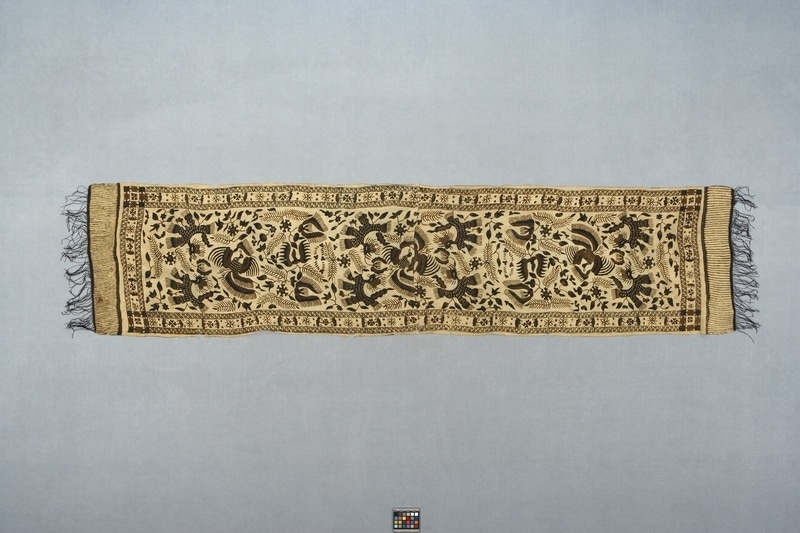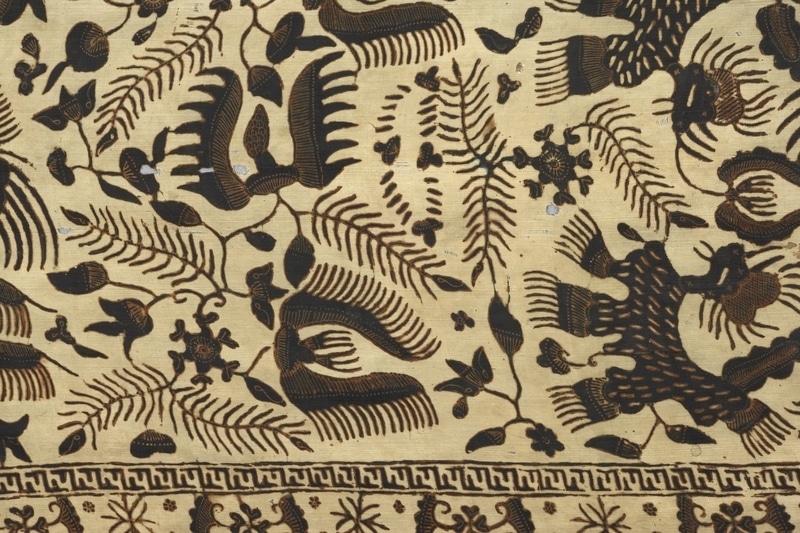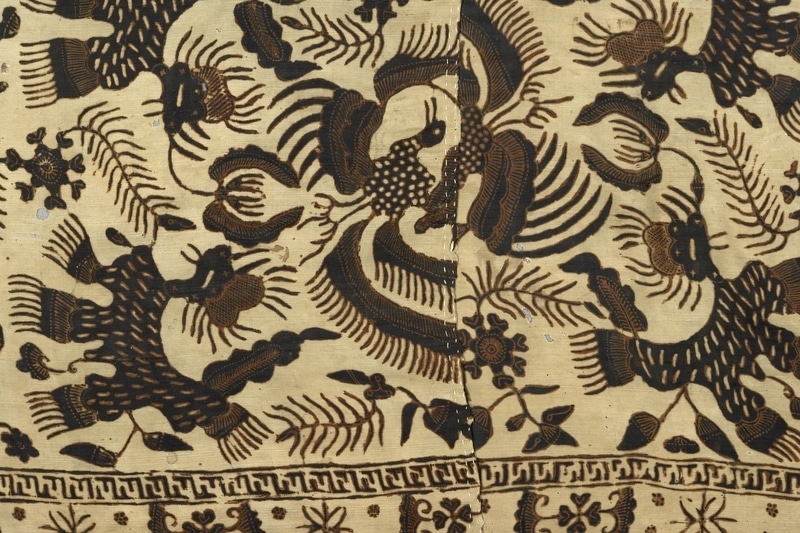Scarf Item Number: Ib424 from the MOA: University of British Columbia



Description
Scarf made of light brown silk with a batik design in brown and black of birds with long tail feathers forming designs, animal figures, floral and vegetal motifs and parallel lines at each end. The long sides are selvedges and the cut ends, finished with black thread, have twisted thin black fringes. Cut and stitched with white thread at the centre of the scarf.
History Of Use
Originally batik was court art because was a domestic occupation of female nobility. Certain patterns reserved only for court use. Similar object of cotton would be used as baby carriers, or shoulder bags. Silk ones worn over one shoulder by upper class women. Worn by both sexes. Shoulder scarves worn by women are called slendang. Batik began as domestic occupation now important industry. Batiks with light background colour is more expensive because they take more work of covering the ground, is slower, and consumes more wax. Women use old method of hand-stick batik while men use copper blocks and can produce up to twenty to forty scarves a day. Dyeing by hand still done. Old method more uneven that new one, but old method produced batik is more expensive and less available. New method of copper blocks (tjab) was introduced mid 19th century.
Cultural Context
clothing; decoration; ceremonial
Item History
- Made in Denpasar, Bali, Indonesia before 1975
- Collected during 1975
- Owned by Marta Friesen before March 3, 1981
- Received from Marta Friesen (Seller) and Museum of Anthropology Shop Volunteers (Funding source) on March 3, 1981
What
- Name
- Scarf
- Identification Number
- Ib424
- Type of Item
- scarf
- Material
- dye, cotton fibre and silk fibre
- Manufacturing Technique
- batiked and sewn
- Overall
- height 48.0 cm, width 221.0 cm
Who
- Culture
- Balinese
- Previous Owner
- Marta Friesen
- Received from
- Marta Friesen (Seller) and Museum of Anthropology Shop Volunteers (Funding source)
Where
- Holding Institution
- MOA: University of British Columbia
- Made in
- Denpasar, Bali, Indonesia
When
- Creation Date
- before 1975
- Collection Date
- during 1975
- Ownership Date
- before March 3, 1981
- Acquisition Date
- on March 3, 1981
Other
- Item Classes
- textiles
- Condition
- fair
- Accession Number
- 0705/0055